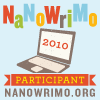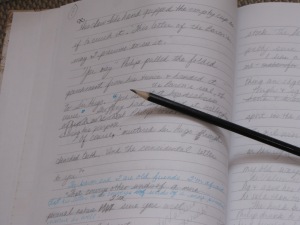
I’ve found some interesting links in the past few days that I want to pass along.
The first is a blog by one of my favourite writers/bloggers Elizabeth S. Craig. In her post, “Chalk One Up for Outlining,” Craig explains that she is not an outliner by nature. “I despise outlining and I hate following outlines.” If you feel the same way, you might like to read how she found a way to make it work for her.
I loved Darcy Pattison’s blog post, “6 Ways Out of Writing Slump.” I could really identify with her reasons for letting writing fiction slide, and I could also see how her suggestions could make a difference.
If you’re getting a project ready to submit to a publisher, read about what seven agents say can stop editors and agents reading: “Seven Agents Talk About the Most Common Submission Mistakes.” Their comments cover the synopsis, the query and your first pages.
Finally if you love writing in journals or with pen/pencil and paper, you might be interested in this opinion piece by Andrew Coyne that was written in response to a report about the lack of teaching of cursive writing in school. “Words on paper – how we write affects what we write.”
I’d love to hear your feedback on any of these links. Who do you follow for great writing advice?




